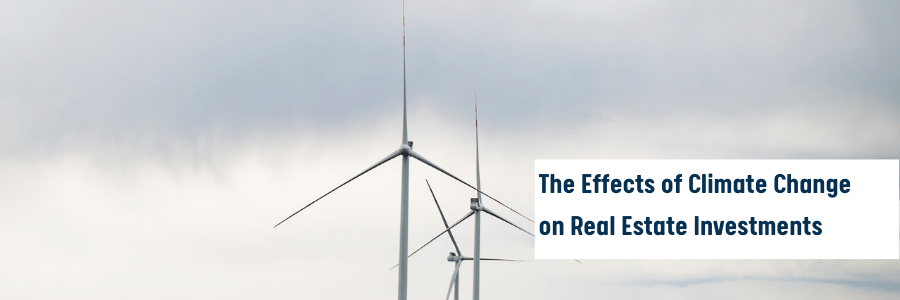In his second COVID-19 letter, Virtus CEO Terrell Gates shares his thoughts on the future and provides qualitative feedback on the influence the virus is having on the commercial real estate market with a focus on our targeted property types.

This is the second update in this series. To start at the beginning, click here.
Dear Partners,
By now, I am sure you have heard from most of your investment managers and vendors with their initial responses to the COVID-19 crisis. You heard from us informally beginning in February and formally with our first letter two weeks ago. We plan on providing further updates as more information becomes available to us. In this second letter since the outbreak, we will share our thoughts on the future and provide qualitative feedback on the influence the virus is having on the commercial real estate market with a focus on our targeted property types. Please recognize that the shelf life for any information we provide is literally days at this point as things continue to evolve rapidly.
Current View and Base Case Going Forward
Probably like many of you, I have been trying to assess COVID-19’s human impact, duration, and long-term economic effects. I am not qualified to give you any new perspective others have not already suggested, but it seems likely the U.S. will follow most other developed countries and enter a period of “suppression” to slow the advance of the infectious disease, buying the healthcare system valuable time to prepare and treat the virus at a more manageable level than simple mitigation would allow.
The challenges policymakers and those who carry out these measures have been twofold. First, different parts of the country are experiencing various levels of infection, and governments have struggled with testing and contact tracing. Second, there is a massive economic impact to these seemingly severe measures. At no time in recent history has there been an abrupt halt in broad economic activity. NOBODY knows what the longer-term implications of this will be. Policymakers can only measure the short-term for now. This explains the race to add more stimulus and aid at unprecedented levels. As of this morning, the third stimulus package was announced, which is why stocks were buoyed yesterday in anticipation of the package, an unprecedented and purportedly $2 trillion package. As always, there is a tradeoff between public health and especially short-term economic wellbeing. It appears this tradeoff is already being fought bitterly between the White House, public health experts, and state governments.
Until we have more information, our base case assumption, for now, is that we will continue this period of suppression with minimal economic activity for at least the next several weeks and up to several months. After that, certain normal activities will return over time at differing stages. As I heard one author call it, this will be the “hammer and then the dance.” The hammer refers to the period of suppression. The dance is how we will deal with COVID-19 once it is presumably under control, but we do not yet have a vaccine for it, which is seemingly one to two years out according to most. As a firm, we are trying to deduce how best to manage through three periods: (1) currently while in effective lockdown (“suppression”); (2) during the period to come where certain liberties return, but we are not yet experiencing normal everyday life (“the dance”); and (3) longer-term where we believe we are likely to operate in a recessionary environment for the next couple of years or more.
Commercial Real Estate Market
As I write this, the S&P 500 has declined circa 28% (peak to valley was closer to 35% February 19 – March 23) and the iShares U.S. REIT ETF has dropped 42% since its peak on the same day. I am sure tomorrow will lead to another high volatility trading day, trading on news, and speculation. It is interesting to put this in context, because the S&P 500 is at a similar level it was at in January 2017, just three years ago, and it is still 2.7x higher than it was in early 2009 at the trough of the Global Financial Crisis (“GFC”). Regardless of your view on the public markets and the direction they are heading, investors cannot help but worry about what is going on in the private markets.
I have started getting the question: “If public markets are down this much, what does this mean for private real estate?” I don’t have a quantitative answer for you yet, because the next marks from NCREIF will not be released until May, and those will be based on March 31 valuations, which admittedly will likely not fully reflect current circumstances. The best early read we will get will be in August when the June 30 valuations are announced. What is important to know is that this is exactly why the vast majority of institutional investors allocate capital to private real estate over public REITs. Private real estate does not have the volatility and the same level of irrational decision making by investors who trade public REITs. Further, it does not have the high correlation to the stock market that public REITs tend to have, which often increases during periods of distress.
What I can share with you is what we are seeing in the market with buyers and sellers, and what we are hearing from our colleagues throughout the commercial real estate industry. Over the last several weeks, we have spoken with several types of real estate investors, institutional consultants, and advisors. Our different property segment teams have been providing real-time intel from sellers, lenders, brokers, and bankers. Transaction activity has generally come to a halt for the time being. Deals that were already in late stages and about to close are likely still moving forward, assuming the lenders have not retreated or there is not a complete reversal in property revenue, like several owners are already experiencing, such as in hospitality. Offers and LOIs are not being consummated or are at least on hold. There are circumstances where buyers are saying we can move forward, but only with a price chip in light of the uncertainty. Most sellers so far are holding firm. I think this will continue during the period of suppression unless it lasts longer than we are expecting, and certain owners are forced to sell. Given how much equity liquidity there was in the market leading up to this, and lenders being reluctant to move against borrowers at least in the short-term, there will likely be very few forced sales in the immediate future. Longer-term is probably a different story.
Most lenders are pausing on loan execution, except in more resilient segments like healthcare and certain categories of multifamily. No doubt, there are fewer debt quotes across the board, and when there is a quote, spreads have widened. For example, Fannie Mae (“FNMA”) and Freddie Mac (“FRMC”) quotes today for a 10-year fixed rate loan on an institutional grade multifamily asset would be in the 3.75% – 4.25% range. That is approximately 50 – 75 basis points (“bps”) higher than it was a month or so ago when 10-Year Treasury yields (the base rate for Agency fixed rate debt) were c. 75 bps higher, which means spreads have increased about 125 – 150 bps in that short period. Commercial Mortgage-Backed Securities (“CMBS”) spreads have widened even further if there is a quote at all. Life insurance companies’ pricing has widened because investment grade corporate yields have increased, which is the alternative investment for most life co’s. The majority of lenders offering floating rate debt are putting floors on the base rate (i.e., Prime, or more often, one-month LIBOR), currently 50 – 75 bps above today’s rates. More than likely, as greater clarity emerges in the credit markets once a period of suppression comes to an end, and lenders have a better view on property performance, spreads should narrow toward more historical levels. That combined with likely relatively low base rates, should provide attractive debt pricing for the higher quality borrowers at that time.
I was thinking back to our 2020 Market Outlook we released in January and how dramatically the world has changed since then. Surprisingly, I think several of the themes still hold true, such as commercial real estate experiencing greater dispersion in performance across segments in 2020 and beyond. Obviously, that has been and will be amplified for several categories. The hospitality business is already crushed, retail will experience significant tenant defaults, office will follow suit, industrial will likely struggle from supply chain issues at least temporarily, and most categories of multifamily will experience individual tenant defaults or non-payment of rents. On the one hand, this will be exacerbated by several laws being proposed that temporarily prevent evictions. On the other hand, we also know the most recent stimulus package may benefit CRE. It is too early to understand its implications, and there will be competing interests between tenants and landlords, which will have to be balanced. Any views we share have to be taken with a grain of salt since we do not yet know the likely impact of the third and most recent relief package.
Virtus Targeted Property Types
First, it is important to remember that it is times like these why we have chosen to focus on property segments that are more insulated from economic shocks and sociopolitical events beyond our control. I have to admit, that nowhere in our rubric that led us into these property types 14 years ago or at any time since did we predict that contagion would be the black swan event to lead to recession.Whether you call this a three-standard deviation event or not (btw, Bill Gates predicted this in his now-famous 2015 Ted Talk), the point is that it’s always something like this that leads to an economic downturn. Sure, we have no historical context in modern times for such a specific event, but that is the nature of a black swan event. We CANNOT predict the future economic landscape, but we can choose to focus on property types that have a better chance of performing regardless of the economic landscape. I would love to tell you that this strategy is bulletproof, but it is not. We too will experience challenges in our portfolio, and we too will experience a wider dispersion of performance across our property types. New leasing activity has stopped or will stop at all properties during this period of suppression. Nevertheless, we feel that we are in a better position than most to weather whatever storm is here and whatever the aftermath is. We might even have an opportunity to take advantage of some of those dislocations and wider dispersions. Having dry powder is a priority in a market dislocation.
The following paragraphs provide an updated view of each property segment, including what we are experiencing in each asset class:
Medical Office (“MOB”), in general, should perform quite well. Historically, this has been the most resilient of all commercial real estate asset classes with 85%+ renewal rates of tenants and increasing demand for healthcare throughout this period. However, there will also be some short-term challenges. Several jurisdictions have already ordered that all non-essential medical procedures be postponed indefinitely to create the capacity to deal with the pandemic, and more jurisdictions will follow suit. We expect there to be rent relief requests, especially from tenants that focus more on non-essential healthcare services, but any impact to our portfolio should be short-term and minimal, if at all. We worry little about this sector, but obviously, we will have to stay close to the evolving healthcare landscape during and immediately after this period.
Workforce Housing, like MOBs, should perform quite well over the intermediate and longer terms. There will be difficulties for tenants paying rent during this period of suppression, and that will likely be amplified at certain properties that cater more to the blue collar tenant than the grey collar tenant. Fortunately, that is a minority of our assets, and much of what occurs will be influenced by proposed temporary regulations, most of which will likely favor tenants. We will work with our valued residents during the coming months where appropriate, but as we have witnessed during the last three recessions, workforce housing is the most resilient category of residential real estate during those periods. It would not surprise me to see the luxury multifamily market struggle and workforce housing benefit from those difficulties.
Self-Storage is unlikely to experience meaningful business disruption due to the virus. People tend to store more goods during periods of distress in part because of postponed home purchases, downsizing, and transition, which also affects commercial storage tenants. No doubt, making a self-storage rent payment is not the top priority if you have just lost your job, even temporarily, like millions of Americans have. What we experienced during the worst of the GFC was increased default rates and loss-to-lease, relatively flat physical occupancy due to new tenants, and increased rental rates. All in all, we experienced stable, effective gross income per rentable square foot, which is the best indicator of performance. Across our portfolios, we presently only own three self-storage assets, having exited the space a few years ago. My guess is that this event will create an opportunity to acquire properties at an attractive basis that were already underperforming before COVID-19 became a factor.
Student Housing so far has remained relatively resilient, particularly off-campus housing, which is the primary focus of the industry. Despite schools closing or moving strictly to online educational platforms, many students are choosing to remain in their student apartments (and continuing to pay rent), rather than returning home. Most leases terminate at the end of July, and I would expect default rates to increase between now and then. I have spoken with a few of the largest student housing owners in the last week, and surprisingly, pre-leasing for the 2020/2021 school year is at similar or higher levels than they were this time last year. That means that either students and their parents expect the current threat to subside before the next school year, or pre-leasing statistics do not yet fully reflect current reality. It is likely a mix of both. As some of my friends with college-age children were recently joking, whether your child goes to Stanford, Harvard, or the University of Chicago, they’re all now attending the University of Phoenix. Despite the bad joke (it’s probably better to laugh than cry when spending tens of thousands of dollars in tuition for your child to receive online education), we expect that universities will be open in the fall. The tier 1 public universities, lower-cost tier 2 public universities, Ivy League, and other high ROI universities will likely continue to experience plenty of demand with growing enrollment and falling acceptance rates. Historically, university enrollment has increased in all six of the last recessions going back to the 1970s. Virtus has not owned any student housing for the last several years, but there will likely be greater opportunities to acquire struggling properties at those high ROI universities that will continue to have strong student demand.
Senior Living will face the biggest temporary challenge, but long-term demand should be high. We modified protocols at all our properties beginning in early February, and we went on a strict lockdown several weeks ago before it was mandated by any of the local authorities. As expected, new leasing has decreased precipitously at most properties since prospective residents or their loved ones cannot tour the properties while our communities are on lockdown, although we are using virtual tours with some limited success. Once the virus is under control, and it becomes apparent that our senior living communities have probably fared quite well, it is likely we will see strong demand from the market for these properties. The two biggest challenges that have been facing senior living for the last couple of years have been new supply and labor shortages, which have impacted healthcare REIT valuations even before the outbreak. New supply will likely abate, and those who have lost their jobs in more volatile industries like retail, hospitality, and related may provide an increased labor pool for senior living communities. In the short-term, we will be reserving extra funds to manage any temporary cash-flow challenges at our assets, most of which are in lease-up. We will also seek opportunities where appropriate to acquire attractive assets at compelling valuations from owners and operators who were already struggling before the recent challenges.
Educational Properties will also experience short-term challenges, with most urban markets on full lockdown or shelter-in-place. We presently own no charter school assets, but we do own a portfolio of 21 early educational facilities across three high growth metros. The schools have been operating, but they will be forced to close in the next few days. Our tenant is one of the largest operators in the country, the schools we own are strategic locations for the operator, and they have nearly 15 years remaining on the lease. Although they will experience cash flow issues during this period of suppression and likely for a short period after that, we see no fundamental headwinds for the space long-term. The number of single-parent households, dual-income households, and women in the workplace has been growing for many years with no signs of abatement in the future once we are past this initial period.
In summary, all our property segments will experience challenges during the short-term, but the intermediate and long-term will likely exhibit the same resilient demand we have seen for these property types during previous periods of distress.
Thank you for the trust you have shown us through the years. We are excited to meet the short-term challenges head-on, and we believe we are in an excellent position to demonstrate the advantages of our cycle-resilient strategy during the choppy times that are likely in all of our future.
Respectfully,

Terrell Gates
Virtus Founder and CEO
Further reading
In his third COVID-19 letter, Virtus CEO Terrell Gates shares an update on the CRE markets and identifies emerging trends we’re seeing in our targeted property types. Read Now >>










